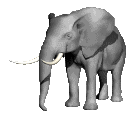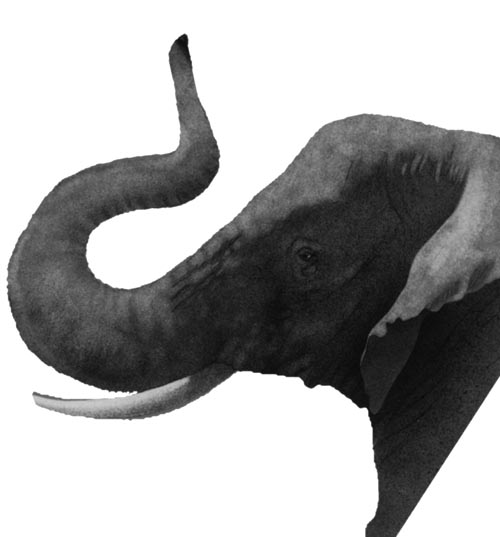 |  |
Glossary: 1. Floppy Trunk Syndrome. A disease that attacks the myelin sheathing of the nerves in an elephant's trunk. Paralysis starts at the tip of the trunk and works its way up to the face muscles. Over a period of time (approximately 2 years) the paralysis renders the trunk useless, hence the name "floppy trunk" and results in slow starvation. 2. Syndrome. (a) a number of symptoms occurring together and characterizing a specific disease or condition; (b) any set of characteristics regarded as identifying a certain type, condition, etc. 3. Electronic radio collars. Remote sensing devices. Utilizing Geographic Information Systems (GIS) and Global Positioning Systems (GPS) electronic radio collars are used to track elephants by using satellites to accurately pinpoint a position on earth. 4. Indigenous tribal wisdom, Loibons (Maasai seer), healers. It is well established that many indigenous people live in balance with their environment and have long understood the value and pharmaceutical effects of herbs, roots, and other exotic vegetation. 5. Transects. A pair of rods joined at right angles to divide and mark an area being studied, which can then be photographed for identification at a later date. Also commonly used for documenting the position of artifacts found at an underwater or surface archeological site. 
Note: Elephants are known to injure their trunks occasionally and even a partially incapacitated trunk can become an extremely serious handicap. An injury, however, will slowly heal and the elephant will gradually regain the use of its trunk. Floppy Trunk Syndrome is a permanent and complete disability; an afflicted elephant can use its trunk as a shovel but loses the ability to lift food to its mouth. This makes it difficult, and ultimately impossible, for the elephant to feed itself. Requiring up to 500 pounds of food each day, an adult elephant with FTS will slowly starve to death. |


